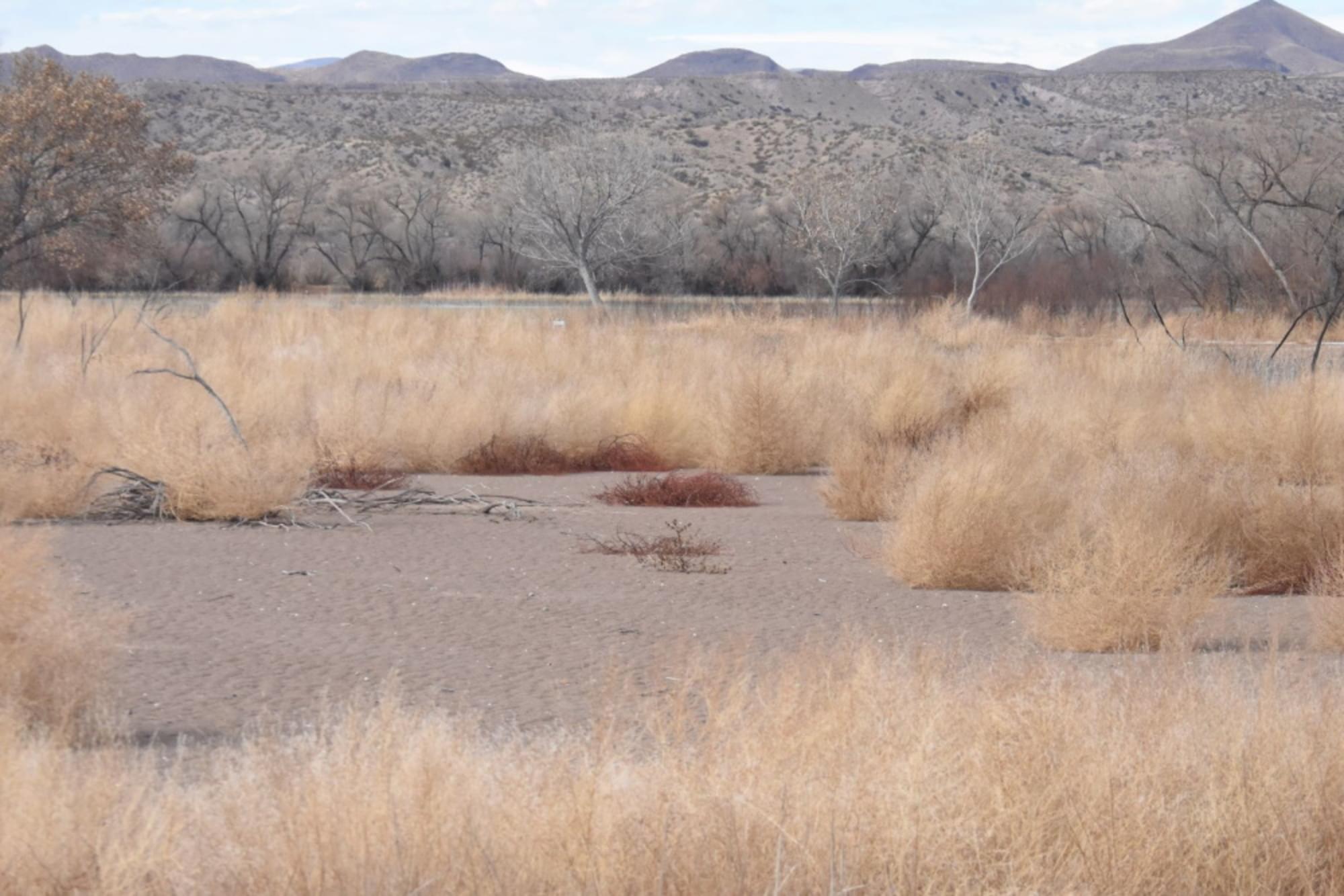Bosque del Apache NWR--Old Rookery

Bosque del Apache NWR--Old Rookery
San Antonio, New Mexico 87832
Bosque del Apache National Wildlife Refuge websiteFriends of Bosque del Apache NWR website
Bosque del Apache NWR Important Bird Area (Audubon) website
Habitat! Guide to Bosque del Apache NWR booklet
Bosque del Apache National Wildlife Refuge map
About this Location
The Old Rookery is a relatively small area, shaped like a triangle with sides of only a tenth to two-tenths of a mile. The terminal segment of the South Loop road forms one side, oriented northeast-southwest; the Main East-West Road forms another side, and a north-south ditch forms the westernmost side. The maintenance road paralleling the ditch’s west bank, and a row of cottonwoods separating that road from the field directly west, may also be considered part of the Old Rookery.
The area is 3 to 6 feet below the level of the roads and was until recently almost permanently flooded as a pond, with dead trees in the center which historically served as a rookery for Black-crowned Night-Herons. During the winter of 2020/2021, the pond was allowed to dry up; cattails, tamarisk, and shrubbery in the pond were then burned. The dike along the east side of the ditch was strengthened and reshaped, with water gates added. The purpose of these changes is to develop a wet meadow for the endangered New Mexico Meadow Jumping Mouse, linking habitat areas to the north and south of the Old Rookery. As of winter 2021-2022, the meadow habitat had not been fully developed, and the area had been claimed largely by invasive kochia.
As a result of the above-described changes, eBird data before winter 2020-2021 offers little guidance as to the species you will see today. However, the hotspot is by no means the wasteland it may first appear, and patience is often rewarded. Great Blue Heron still stalk the southern ditch. White-crowned Sparrow and Song Sparrow abound in the Rookery proper during winter; Northern Flicker and Ladder-backed Woodpecker also frequent the cottonwoods along the southern ditch at this time of the year, as do Red-tailed Hawk, American Kestrel, and other raptors, while Sandhill Crans and Snow Goose are common low flyovers. The cottonwoods, along with brushy areas just to the southwest of the South Loop road, hide Spotted Towhee, American Robin, Lesser Goldfinch, Yellow-rumped Warbler, and other species, depending on the season.
About Bosque del Apache National Wildlife Refuge
See all hotspots at Bosque del Apache National Wildlife Refuge
Established in 1939 to provide a critical stopover for migrating waterfowl, the refuge is well known for the thousands of sandhill cranes, geese, and other waterfowl that winter here each year.
Situated between the Chupadera Mountains to the west and the San Pascual Mountains to the east, the 57,331-acre refuge harbors a wild stretch of the Rio Grande, a ribbon of cottonwood and willow trees visible on the landscape from distant mesas.
Petroglyphs tell the story of ancient people who lived and hunted here. The river and its diversity of wildlife have drawn humans to this area for at least 11,000 years when humans migrated along this corridor, sometimes settling to hunt, fish, and farm. Artifacts and stone tools found nearby tell us that nomadic Paleo-Indian hunters pursued herds of mammoth and bison in the valley.
Today, Bosque del Apache is part of the National Wildlife Refuge System, a national network of lands and waters set aside and managed for the benefit of wildlife, habitat, and you.
Features
Entrance fee
Roadside viewing
Restrooms on site
Content from Bosque del Apache National Wildlife Refuge website, Birding in New Mexico (National Audubon Society), and John Montgomery
Last updated March 10, 2024
